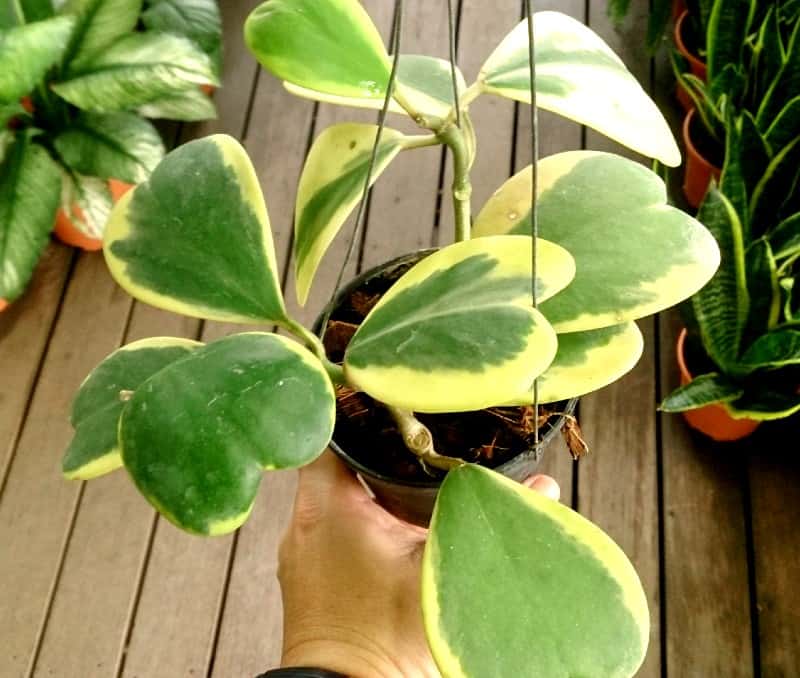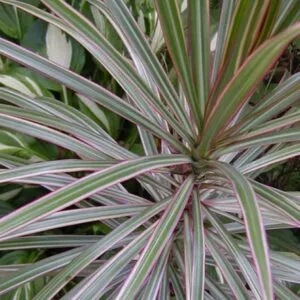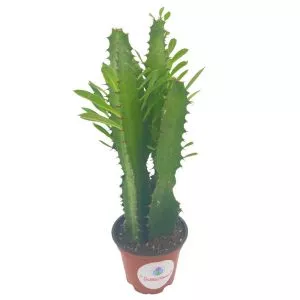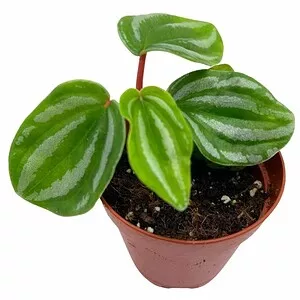No products in the cart.
Table of Contents
If you like aromatic flowers, then the Hoya lacunosa is the perfect plant for you! It will appeal to you because of the lovely aroma it exudes. It has small white flowers and is pretty delicate. It flowers at all times of the year.
This is a small, green, oval-shaped perennial vine that grows from thin, trailing tendrils. It is an Indonesian native plant belonging to the Apocynaceae, or Dogbane Family, belonging to the Hoya genus. Read more below to find out more about this beauty!
The table below is the basic information about the hoya lacunosa. This information introduces the brief plant hoya lacunosa care.

Hoya Lacunosa Plant Care Basics
 The hoya lacunosa should be given appropriate care. The gardeners should be fully aware of how to take care of the plant. Complete knowledge of the hoya lacunosa care guides the gardeners in providing the plant with excellent growing conditions.
The hoya lacunosa should be given appropriate care. The gardeners should be fully aware of how to take care of the plant. Complete knowledge of the hoya lacunosa care guides the gardeners in providing the plant with excellent growing conditions.
This would allow the plant to grow healthy while manifesting its full beauty. Giving the right hoya lacunosa care will be helpful for the plant’s growth, even it was planted indoors. The following are the care tips on how to take care of the hoya lacunosa properly.
Best Potting Mix
 The soil requirement of the hoya lacunosa is a well-draining soil type that is very loose and has an excellent potting mix. The soil can be mixed with organic materials such as peat moss, perlite, gravel, vermiculite humus, charcoal, etc.
The soil requirement of the hoya lacunosa is a well-draining soil type that is very loose and has an excellent potting mix. The soil can be mixed with organic materials such as peat moss, perlite, gravel, vermiculite humus, charcoal, etc.
There should be a well-draining soil mix or potting mix to aid the hoya lacunosa in achieving its required optimal condition to survive and thrive.
Although, not all these materials can be added in a mix (organic materials may vary upon availability). However, these organic materials also help the plant prevent getting too wet, which will eventually result in root rot.
These organic materials retain enough water, provide nourishment, prevent excess water from pooling on the topsoil, and help the excess water drains quickly. Also, these organic materials give an airy feeling to the soil- enough for the plant’s roots to grow well or avoid root bound.
You can buy an orchid potting mix when you have enough budget to buy the best quality soil. The orchid potting mix is available in the nearest garden store in your community. At the same time, the airy feeling needed by the plant’s roots can rest assured.
Watering Needs
The water requirement of the hoya lacunosa is a medium amount of water. Enough for the plant to gain the required moisture and enough stored water to survive in drought areas.
The plant was thought of by some as a drought-resisting plant or moderately tolerant to drought. However, a frequent watering schedule should be followed to give the adequate water that the plant needs. Make sure that the excess water should be quickly drained and does not remain stagnant on the topsoil.
It is also important not to overwater or underwater the plant to prevent further complications.
The plant is said to be active during the spring and summer seasons so gives the right amount of water needed by the plant. On the other hand, reduce watering the plant during the fall and winter seasons as the plant won’t grow during these seasons. However, they are said to survive these harsh seasons if placed indoors or given the right care.
Lighting Requirement

The lighting requirement of the lacunosa should be a bright indirect light. The bright indirect light helps the plant survive and thrive without any complications for its growth, leaves, and health. Since the plant has been discovered and is naturally known to be thriving in the rainforest, they don’t need direct sunlight to light up itself.
Filtered sunlight or bright indirect light is the only preferable light requirement for the plant. These preferable lighting conditions are only available near the window, filtered plant nursery, or a partially shaded area in the garden. These aforementioned lighting conditions can give the best condition for the plant to survive and thrive.
It is important to note that the direct sun can cause the plant to scorch its leaves as it will be exposed to it. The plant needs only certain lighting conditions, and the gardeners must know that they should not exceed them. The plant’s health and green leaves will be directly affected by the complications offered by direct sunlight exposure.
The lacunosa is not ideal for being placed in an area where it could not receive enough sunlight, or the site may be fully shaded. A fully shaded area with no lighting conditions can make the plant feel soggy and will turn the plant yellow. These feelings can cause stress and malnourishment in the lacunosa system.
A fully shaded or darkroom is the worst place for the plant; it will cause it to shrink in size, wilt, or be unproductive.
If the lacunosa is treated as an indoor plant, be sure that the plant can still get all its bare necessities, particularly the lighting source (for the plant to make photosynthesis). Treating the said houseplant into an indoor plant can cause the lacunosa to be protected from the volatile radiance of the sun.
When treated as an indoor plant, do not forget to install artificial lights or any lighting source that could give the recommended warmth to the plant. However, you need to place the plant to the lights indirectly. In addition to that, follow the specific hours of the morning that the plant actually required.
Temperature
The temperature requirement of the lacunosa is the same as that of the tropical temperature. The lacunosa is known to be a tropical plant. Meaning that it could only best thrive and tolerate conditions where the temperature is 15-30 c or 59-86 f.
These recommended temperatures are enough for the hoya to survive and thrive well in the area where it was planted.
The below and above temperatures can give complications and stress to the lacunosa. However, the difficulties are only a minor consequence of hoya lacunosa care. If the temperature goes too high, consider placing the hoya in a temporary place where it could get its warm temperature.
The hoya is best planted outdoors during the summer and spring seasons. On the other hand, the hoya is best placed indoors during the winter and fall seasons. However, it would help if you were extra watchful every season as a sudden increase or decrease in temperature could give you a hint of when is the right time to place the hoya away from its permanent place.
Humidity
The humidity requirement of the wax plant is very high. The very high humidity is what all tropical plants needed the most. The higher the humidity level, the higher the optimal conditions you are giving on the hoya.
High humidity levels encourage the hoya to grow well and to thrive easily, making it easier for propagation for the next year or two.
When planted in a place with a medium level of humidity, the wax plant can still survive and thrive. However, there will be an enormous difference compared to the tropical plants that grow well with a higher humidity level. Also, the low humidity level is not suitable for the optimal condition needed for the wax plant to survive and thrive.
To ensure a consistent and higher humidity level, you can use any available techniques and equipment present in your home or buy in the nearest garden store. You may use a humidifier, a container with pebbles filled with water, mist, and other techniques to increase the humidity level required for the wax plant.
It is important to remember that the bathroom and living room have a consistent, higher humidity level that allows the plant to thrive well and a natural décor for the home.
Fertilizer

The fertilizer requirement of the hoya is organic fertilizer. The said fertilizer can help the plant grow faster, complete its required nutrition, and solve its vitamin deficiency. The fertilizer may take time for the plant to absorb its nutrients fully.
I highly prefer organic fertilizers for hoya lacunosa care because the aforementioned fertilizer has no adverse effects on the hoya. In addition to that, organic fertilizers encourage the soil mix or potting mix to be healthy and rich in nutrients.
Summer and spring seasons are the preferable seasons where you could give apply fertilizer for the hoya. These seasons are also favorable for the hoya as the hoya survives and thrives easily in these seasons. At the same time, these seasons are the best propagating seasons.
During fall and winter, you must not give or minimally give the hoya fertilizer. During these seasons, the (hoya usually sleeps or is dormant. Excessive fertilizer application to the hoya can stick the salt or any chemicals that poison the hoya.
Propagation
You can reproduce this Cinnamon-scented wax plant through stem cuttings and seeds. However, seeds are more complex and less specific than cuttings.
Reproducing through stem cuttings:
- Sterilize the material (sponge rock, fine bark chips, or loose potting soil) and the pot thoroughly before starting with stem cuttings.
- Cut a few short stems along with some nodes.
- Place the stems straight on the soil, covering the nodes.
- Mist the medium to keep it moist but not saturated.
- From around the cuttings, firm up the potting medium.
Reproducing through seeds:
Choose the fresh seeds of hoyas because there will be higher chances of propagation. On a medium humidity, such as a commercial seed sowing mix, a bed of delicate peat moss, clipped sphagnum, or fine potting soil, those seeds will sprout readily.
Maintain moist, warm, suitable drainage holes and a well-lit environment for the seedlings.
Growth Zone
The hoya lacunosa plant can grow up to 60-90 centimeters, depending on the basic necessities it receives. The plant has fuzzy white, yellow, cinnamon-scented flowers. Plants like hoya lacunosa are also ideal as hanging plants. Make sure that the plant has humus-rich soil in order for the lacunosa’s foliage to bloom well.
You can also consider the plant like a succulent that grows freely within your home. The fragrance of the plant smells like a newly-baked cinnamon bread.
The spring or summer season is considered the growing season for the plant. Water the plant frequently as the moisture dried up quickly. However, the winter or fall season is considered the dormant season for the plant.
Potting
Any pot will do for the plant as long as it has drainage holes to provide aeration for the roots and to drain the water quickly. Drainage holes play a vital role in the plant as they can make the excess water thoroughly flow out from the pot.
A basket can also be considered a good pot for the plant, as long as it does not bind the roots.
You can also re-pot the plant every 2 to three years for encouraging new leaves to grow or for better flowering performance.
Hoya Lacunosa Varieties and Similar Plants
There are approximately 300-450 species of hoya plants. One of which is the hoya. Here are some examples of hoya species or varieties that have a bit of similarity to the hoya:
Hoya Carnosa
 The primary (green) form of Hoya Carnosa is less common than many of its excellent hybrids (of which there is a ridiculous number). The foliage can be plain, variegated, crinkled, or otherwise textured. The blooms are long-lasting, fuzzy clusters of fragrant stars.
The primary (green) form of Hoya Carnosa is less common than many of its excellent hybrids (of which there is a ridiculous number). The foliage can be plain, variegated, crinkled, or otherwise textured. The blooms are long-lasting, fuzzy clusters of fragrant stars.
Hoya Pubicalyx
 Pubicalyx is a hardy twining vine that can trail or climb, but it’s a little unruly: you may spend time unwinding the plant from its neighbors. It’s one of the fastest-growing Hoyas and very easy to propagate – just put a cutting in water.
Pubicalyx is a hardy twining vine that can trail or climb, but it’s a little unruly: you may spend time unwinding the plant from its neighbors. It’s one of the fastest-growing Hoyas and very easy to propagate – just put a cutting in water.
Hoya Kerrii
 This plant, otherwise known as a Sweetheart Hoya or Lucky Heart, is commonly sold as a single, heart-shaped leaf planted in a small pot. The bright emerald green color of the cute, rounded leaves makes them popular St. Valentine’s Day gifts.
This plant, otherwise known as a Sweetheart Hoya or Lucky Heart, is commonly sold as a single, heart-shaped leaf planted in a small pot. The bright emerald green color of the cute, rounded leaves makes them popular St. Valentine’s Day gifts.
Hoya Macrophylla/ Hoya Clandestina
 This large, rambling species is prized most especially for its waxy, light green, vein-patterned foliage. Their pointed oval leaves have an interesting 3-D texture. Prominent pale veins run longitudinally across a network of horizontally laid smaller veins.
This large, rambling species is prized most especially for its waxy, light green, vein-patterned foliage. Their pointed oval leaves have an interesting 3-D texture. Prominent pale veins run longitudinally across a network of horizontally laid smaller veins.
Hoya Lacunosa Diseases & Pests
Hoyas are pest and disease-free in most cases. However, if it is not adequately cared for, it can develop complications. The fungus Phomopsis is one of them. It infects Hoyas with other sooty black fungus species when exposed to high humidity for long periods. Damp-off organisms can also affect seedlings.
Mealybugs and Aphids like young growth and fragile foliage and flowers. These houseplants’ most frequent insects are the green peach aphid, oat bird-cherry aphid, and yellow oleander aphid. Other pests to watch out for include rats, snails, slugs, grasshoppers, and red spiders.
These might happen if it’s hanging in an open-air or glasshouse. Increase humidity and sprinkle miticide on all leaves. Because most sprays are toxic, perform the therapy outside.
Frequently Asked Questions
The flower umbels of this tiny Indonesian species fill the night air with a rich cinnamon-scented smell. This thick waxvine, small-leafed species, like most hoyas, thrives in a hanging basket. Its trailing stems dangle over the pot’s edge, with particular fragrance, fluffy white blooms in each flowering umbel.
Though this family of wax plants prefers full sun indoors, direct sunshine may be too much for it when it’s outside. When placed outdoors, give the wax plant some shade to keep its leaves from heating up. Hoyas can sun stress and turn an almost scarlet color when exposed to greater light levels, which some people like and aren’t always hazardous to your plant.
In ideal conditions, this is a reasonably quick grower given its small size. The stems can bloom around 5 feet in length, half the length of other popular types.
Plantly offers this kind of plant without any inconvenience. Message us now and it will be delivered!
Whether you want to buy, sell or simply reach out to other plant enthusiasts, Plantly is the right place to be!
Only 1 left in stock In stock (can be backordered) In stock In stock
$215.00
Sold By:
Kazumi Nursery
Ariocarpus Retusus cv Furfuraceus. T5-1200
Only 1 available and it’s in 1 people’s basket
Sold By:
Kazumi Nursery
Free Shipping
$22.99
Sold By:
Gar-Zen Botanical Design
Dracaena Tri Color Dragon Tree
Rated 4.86 out of 5 based on 49 customer ratings01
Sold By:
Gar-Zen Botanical Design
$15.99
Sold By:
BubbleBlooms
Original African Milk Tree, Euphorbia trigona Green, Non-Variegated, Giant Big Thick Multi Branches, in a 4 inch pot, well rooted beautiful
Rated 4.81 out of 5 based on 279 customer ratings05
Sold By:
BubbleBlooms
$6.95
Sold By:
BubbleBlooms
$9.99Peperomia Mini Watermelon, 2 inch verschaffeltii, Steves Leaves, Rare Pep, Unique Homegrown Exclusive Plants
Only 76 available and it’s in 4 people’s basket Rated 4.81 out of 5 based on 279 customer ratings00
Sold By:
BubbleBlooms






